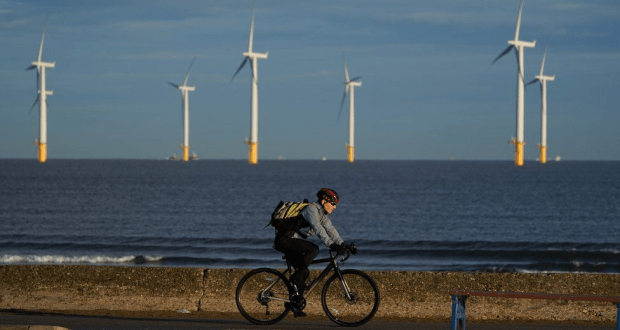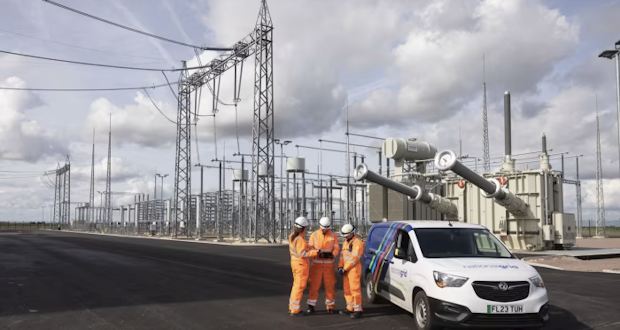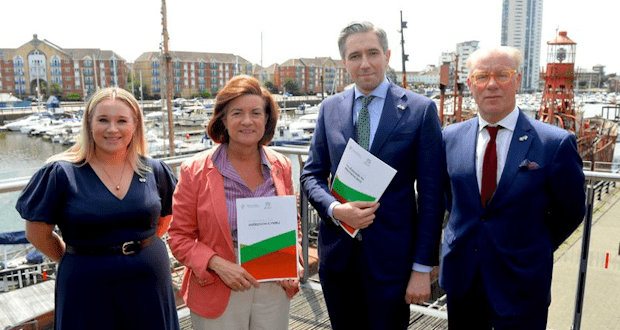By 2037 there could be upwards of 5,000 jobs supported directly by the offshore wind sector located off the western seaboard, a new report has found. The sector could generate €400 million in gross value added (GVA) annually to the Atlantic region economy, according to the research commissioned by regional stakeholders and funded by Enterprise Ireland, local authorities and the Western Development Commission.
The report confirms the “unprecedented opportunity” of offshore wind along the western seaboard embracing the northwest, west, and midwest regions over the next 20 years.
The Government has set a target of 7 gigawatts (GW) of offshore wind by 2030 with a view to achieving 30GW in the 2030s – with a significant portion of associated renewable power and green hydrogen being exported to Europe. This includes fixed turbine wind farms in the Irish Sea, but increasingly using offshore floating technology off the west coast.
As offshore becomes more dominant over onshore, the impact on indirect employment will be equally transformative, the report concludes. The figures projected “are a direct correlation to wind farm delivery and the indirect benefits could be many times greater”.
The report identifies positive downstream economic, environmental and societal impacts that would be likely following the direct impact of jobs and supply chain delivery.
‘Huge opportunity’
Minister of Enterprise, Trade and Employment Dara Calleary said the report provided a basis for the Atlantic region to progress in developing its wind energy industry by “identifying the huge opportunity for the region in the onshore to offshore wind energy sector and the potential for thousands of high-quality, sustainable jobs that it brings”.
He looked forward to “working with all of the regional stakeholders, public and private, in striving to deliver on the promise of this study”.
The report by Dublin Offshore Consultants and Bigger Economics considers buildout scenarios across the region – from Donegal to Limerick – with projections under steady, rapid and aspirational outcomes. The offshore wind sector will overtake onshore in the Atlantic region within 15 years, it finds.
The longitudinal economic model estimates the combined GVA of onshore and offshore wind in the region will be €2.85 billion up to 2037 in the rapid buildout scenario. In the steady scenario it is reduced to €1.86 billion and for the aspirational scenario it is €4.21 billion to 2037. By 2037 it is expected that in the Atlantic region the wind sector will annually generate €220 million GVA in the rapid buildout scenario; €170 million GVA in the steady scenario and €400 million GVA in the aspirational scenario.
The report underlines Irish wind energy resources are among the best globally: “Wind projects onshore can avail of wind speeds of 7 metres/second (m/s), which are high in global terms. The wind speeds available off the Atlantic coastline, are far higher at up to 11m/s within Irish territorial waters (12 nautical mile limit) and up to 15m/s in the Irish exclusive economic zone.”
It calls for delivery of “a regionally inclusive national energy strategy to co-ordinate route to market, grid upgrades along the Atlantic region and developing new courses and centres targeting the wind energy sector, with a particular emphasis on floating offshore wind skills and expertise not currently offered by Irish educational bodies”.
Clear signals from the Government are critical to deliver the full potential of the wind energy industry in Ireland and the Atlantic region, it underlines.
‘Clear signals’
“Specific targets for installed capacity of offshore wind post-2030 are required. Clear signals on a pipeline of wind energy activity in the Atlantic region will enable ports to finance and commence upgrades, project developers to develop construction schedules, and educational bodies and training providers to tailor courses and ramp up activity to support industry needs,” it adds.
Almost 40GW of offshore wind projects are in development in the State, of which more than 10GW are in the Atlantic region. In early 2022, the first six commercial scale offshore wind projects comprising nearly 4GW were given “relevant projects” status to allow fast-track development. Five of these are in the Irish Sea, while the 400MW Sceirde Rocks project, is proposed for off the Galway coast.
The majority of remaining projects in the Atlantic region are focused on access to the Moneypoint and nearby Tarbert grid connections, anticipated to become available from 2025. These are located off the Clare and north Kerry coasts and intend to use floating platforms.
With the exception of those using Moneypoint and Tarbert grid connections, all other future installed floating offshore wind capacity will require upgrades in grid connection availability, battery storage, or alternative routes to market such as production of green hydrogen, it notes.
When assessing skills needed for the industry to grow, it identifies engineering, applied sciences, logistics, digital and supply chain management as essential.
Original article – https://www.irishtimes.com/business/economy/2022/10/28/offshore-wind-in-atlantic-region-could-support-5000-jobs-by-2037-report/



